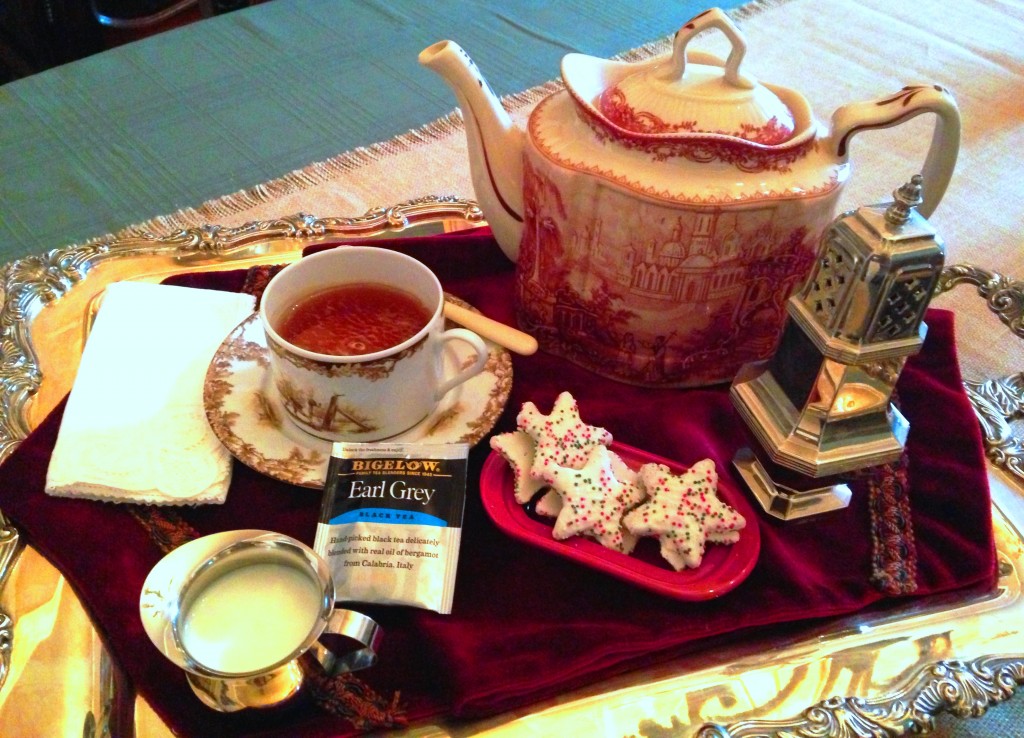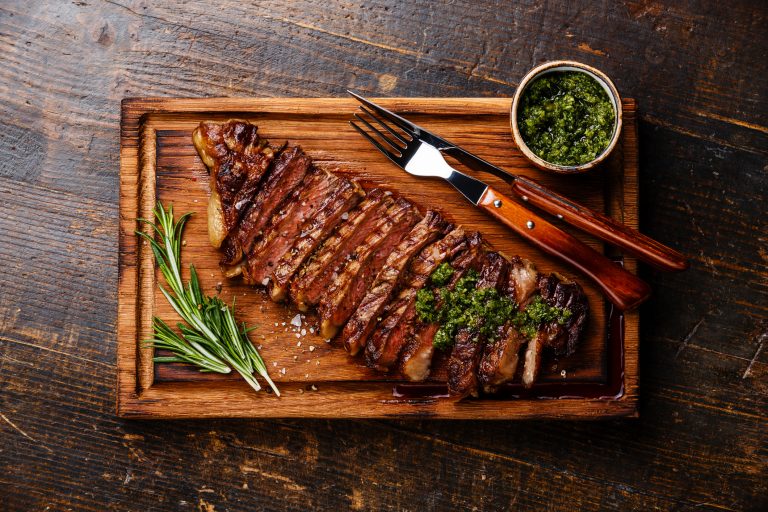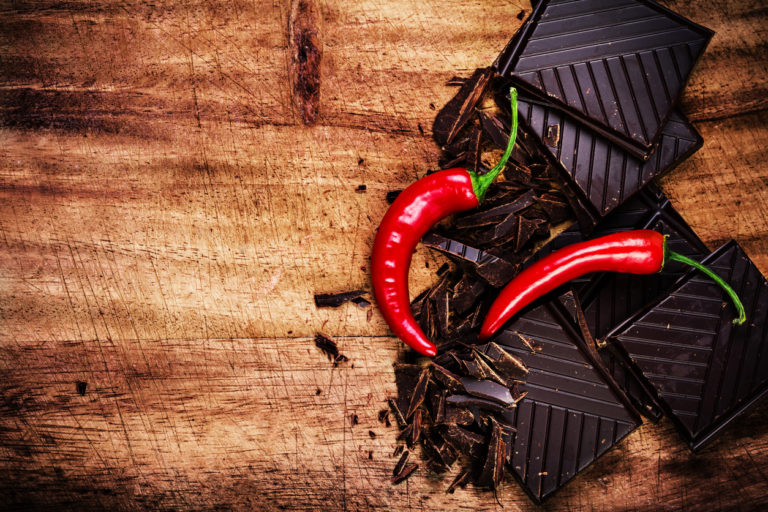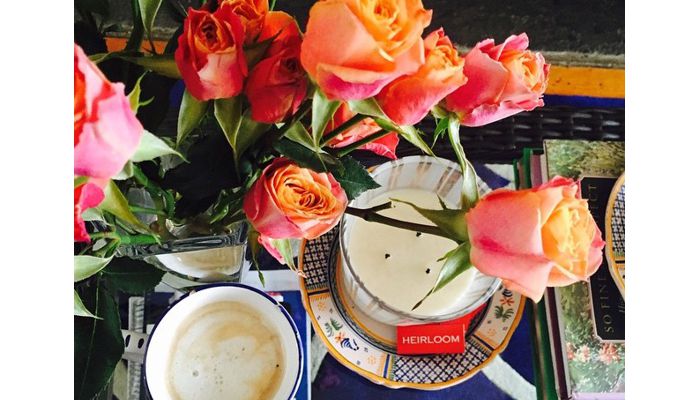Tea Etiquette: Sip a Cup of Tea and Enjoy National Hot Tea Month

I saw the movie Saving Mr. Banks this weekend, featuring Tom Hanks and Emma Thompson. Emma Thompson plays author P.L. Travers, who wrote Mary Poppins. On several occasions throughout the movie she requests a pot or cup of tea, always making a point to firmly insist on “milk in first”.
With January being National Hot Tea Month, I thought it would be the perfect time to address the art of taking tea, along with P.L. Travers’ request for “milk in first”. I encourage you to curl up by the fire and enjoy a hot cup of tea and a good book, or invite a friend over to share a slice of banana bread and a warm pot of Earl Gray.
Here are a few ways to enjoy your tea, this month and throughout the year:
Set a pretty table or tray. Sharing a cup of tea always feels more special when you put some energy into making it a true celebration. If you set a tray for one (yourself), or a lovely tea table for a group of 10, drinking tea from a pretty cup or mug, while enjoying a favorite cookie or tea sandwich feels like a mini-ceremony or a full-fledged event.
Be careful who is on your guest list. There are three guests that shouldn’t be included: Jealousy, Anger and Negativity. These three guests have no place at your tea table, or in your life. Tea conversation should be uplifting and positive. Stay away from negative topics or subjects that are best discussed in private.
Milk In Last. There is an ongoing debate as to whether milk should be poured into the cup before the tea (“MIF”), or the other way around. The prior reasoning of “milk in first” was to prevent fragile porcelain from cracking as a reaction to boiling water. The protocol of “MIF” or “MIL” is to pour milk in after the tea has been poured in your cup.
Milk is not added to green or oolong tea. Strong teas are enhanced by milk but lighter teas, such as green, white and oolong are best taken without milk so as not to overwhelm the gentle flavor. I know some tea lovers who insist on adding milk to their white tea, and it’s strictly a palate preference.
A scone should be eaten one bite at a time. Never cut your scone in half and “butter up” the center with jelly, proceeding to eat the scone like a baloney sandwich. Break one piece of the scone apart, butter it with clotted cream or jam, and eat the single piece. Jelly or jam go on the scone first, followed by the clotted cream.
Use your napkin properly. Remove the spot of cream from your lips or the side of your mouth with a gentle blot, rather than a swipe across the face. Your napkin is specifically for your mouth, placed on the chair when you leave the table temporarily. At the end of the tea, place your napkin on the table.
Look into the middle of the cup. When taking a sip of tea, focus your gaze into the center of the cup. Looking over the cup will most likely encourage a spill down the front of your blouse.
Use your fingers. A tea sandwich may be eaten with your fingers, as well as cookies and petit fours. Cake or any sticky food items require a fork.
Never drink with a teaspoon in your tea cup. After you have stirred your tea, making every effort not to clink the sides of the cup, place your teaspoon behind the cup, at an angle, on the saucer. The handle of the cup and the teaspoon should face the same direction.
Don’t confuse Afternoon Tea with High Tea. High Tea is not a fancy affair at all. In years past, it was considered a heavy meal often fed to farmers coming home for dinner after working in the fields. A strong tea was served with the meal to give the workers strength, as well as act as a stimulant. Afternoon Tea, which consists of dainty sandwiches, scones and pastry, has traditionally been served between the hours of 3 and 5 o’ clock, intended to fill in a lengthy space between the mid meal and a late dinner.
Pinkies stay down. Above all else, please do not stick your pinkie straight up in the air. It’s very bad manners!
For more tea time inspiration, take a peek at my “It’s Tea Time” Pinterest page. Please follow me on Pinterest , “like” my Facebook page and Tweet me @dianegottsman.




